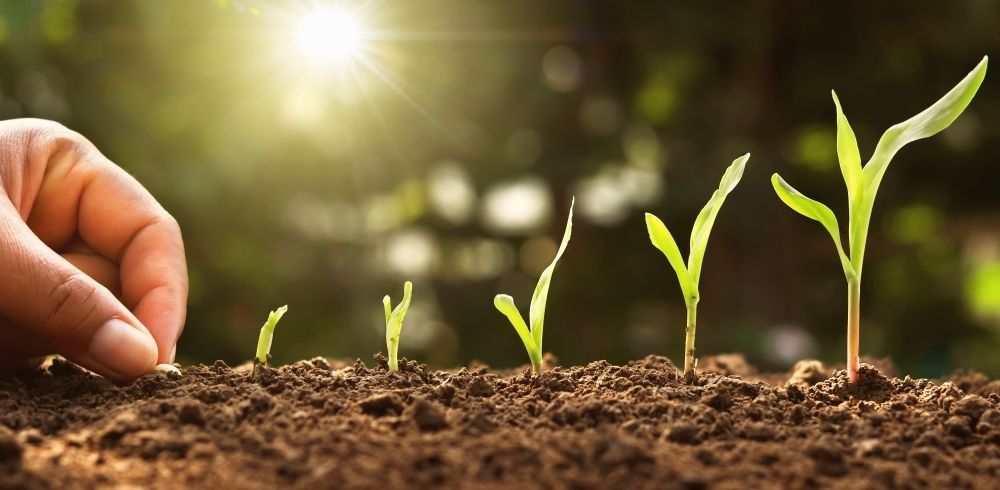Seed corn; five seeds planted now change what comes later.

I’m a city boy. Most of us live our lives in the city or the suburbs and have vague ideas about the rhythm of life lived by farmers and ranchers. We are blessed by their work when we go to the grocery store. We might actually know when strawberry season is (prices are lower.) But to understand the cycles and seasons gives us an appreciation for “real” life.
This is why Montessori classrooms put a major emphasis on botany and zoology – to introduce our children to the mystery and magic of springtime and harvest. Whether planting is done in pots or garden plots, to prepare the soil, to plant a seed, to water it, to watch it grow, to pull the weeds, to see it flower, to observe the fruit and to enjoy the harvest is a celebration of life.
What is the most important step in this botanical experiment? They are all important but the critical step happens long before you start the process – you have to have the seed! Where does the seed come from? (No, this is not about the birds and the bees.) The seed comes from that part of the harvest that you didn’t consume or sell. It is not part of the harvest that you get to “enjoy.” You keep the very best seed – and you bury it. Then you work and pray that it flourishes.
Your seed corn is your Montessori investment. Montessori education is expensive – sometimes even approaching college tuition. And a question often asked is, “Shouldn’t I be saving this money for prep school or college?” The best time to plant your educational seed is in the springtime of your child’s life – Now!
There are five seeds planted in a Montessori preschool or elementary that bloom in college.
- The first is order. Order is a foundational need of the child – it even has its own sensitive period in the child’s development. When a child enters this sensitive period, he builds for himself the internal apparatus that will guide his future acquisition of knowledge and give him the ability to construct all the other areas of his life. In a Montessori classroom everything has its own special place. This is not only efficient but impacts the whole psychological nature of the child. Order (especially from within) brings calmness and focus, saves frazzled nerves and produces the environment (both physical and emotional) in which concentrated work can occur.
- The second seed is initiative – learning to start on your own. Traditional schools spend twelve or thirteen years telling your child what to do, when to do it and how to do it. College is the first freedom from such constraints but it is hardly the time to begin to practice initiative that has been inactive and dormant.
- The third seed planted in preschool is the seed of mastery – finishing what you start. In Montessori you don’t take an “F” and go on. You go back and work on it until you master it. It is a major lesson (and habit) not only for school but for life.
- The fourth seed is taking responsibility. In college there is no one looking over your shoulder (or to blame.) You are the young adult expected to take responsibility. For thirteen years of traditional education someone else bore the burden of responsibility. College is not the place to begin especially when Montessori children welcome the responsibility so early and young.
- The fifth seed is curiosity. This is not so much of a seed that is planted in preschool but a seed that is nurtured, encouraged and kept alive. Curiosity is the difference between a life of boredom and a life of fascination with the world around you. Curiosity helps you not to settle, it helps you to dream, it helps you to look beyond the next hill. Curiosity can help, to not only make a living, but to make a life.
These seeds are a gift you plant in your child’s life now that bloom in college and for the rest of their lives. It is the best seed you can give.
By Edward Fidellow